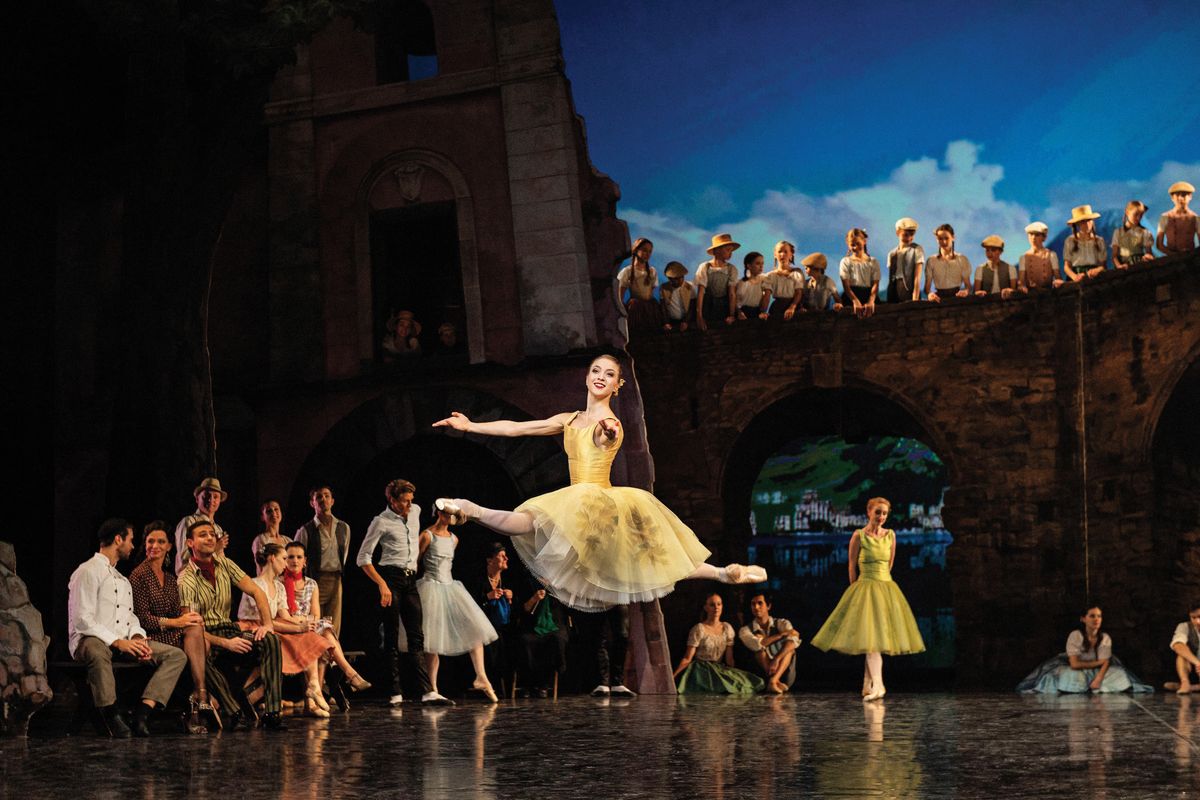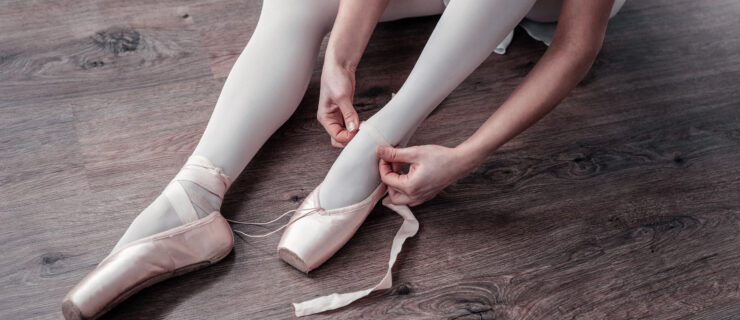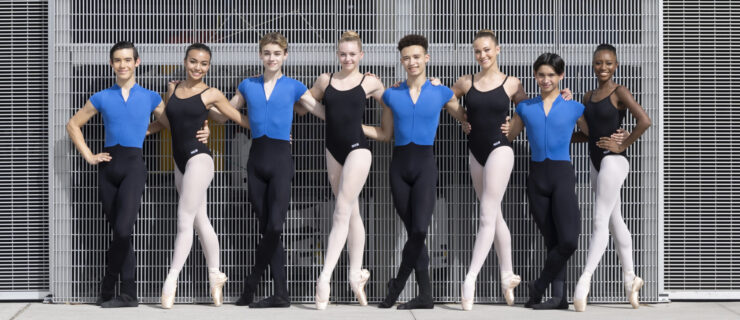Master the Classic Bournonville Step, Grand Jeté en Avant Landing in Attitude Derrière
The classic Bournonville-style grand jeté en avant, says Thomas Lund, director of the Royal Danish Ballet School, “is a bouquet of flowers for the audience. We say, ‘Welcome to Copenhagen.’ ” Even if this is your first excursion into Bournonville technique, these thoughts and images will help you perfect this quintessential jump.
Be generous:
The shape of the port de bras creates the gracious gesture Thomas Lund describes. “It comes from your center,” he says. Your fingers should be opposite your navel as you pass through first position; if your arms are too high, you won’t appear “on top of yourself” in the jump. Think of opening forward from first rather than side, and turn the wrists so the palms face slightly upward.
Taking off:
“Often in Bournonville you don’t have a lot of runs into jeté avant,” says Lund. He points out that in some variations, one step on the upstage leg is all the preparation you get. The action of the downstage leg, brushing through first to launch you up, should feel like a speedy dégagé. Musically, the accent is up. “Don’t show the audience how you get into your jeté avant. You have to just arrive in the position, in the air.”

Use your head:
The coordination of the épaulement going into the jeté is not just aesthetic, Lund says. It’s also a technique to put your weight onto the leg you’ll be jumping off of. Think of inclining the head towards the upstage leg as you step into the jeté without turning your face away from the audience. “Then you have an up-and-over feeling, jumping forward.”
Check your attitude:
“Go with a shorter attitude for jeté en avant,” says Lund. Find the shape at the barre before trying it with the jeté. From passé, think of taking the knee really behind you and lift your thigh to create a “flat” shape with the leg. “It has to be pure, square, classical.”
Prepare your muscles:
“Ballon is important for the Bournonville style,” Lund notes. “You have to have a good jump. It’s quite hard on the calves.” Get your legs ready by working regularly on the Pilates reformer, and add calf-rises to your daily warm-up routine at the end of barre: On one leg in parallel, press slowly up to relevé and then lower almost all the way down, leaving just enough space “so you can put a one-dollar bill under your heel.” Build up repetitions as your calves and hamstrings get stronger. “That will train your body to cushion your landings.”
 Royal Danish Ballet dancers perform grand jeté en avant during rehearsal for Bournonville’s Napoli. Costin Radu, Courtesy Royal Danish Ballet
Royal Danish Ballet dancers perform grand jeté en avant during rehearsal for Bournonville’s Napoli. Costin Radu, Courtesy Royal Danish Ballet
Tip: “Be careful that you don’t turn the elbows.” Lund sees many dancers make the mistake of exaggerating the port de bras, turning their whole arms. “Just open the hands,” he advises, beginning with the pointer finger. Keep your upper arms lifted and round.
Tip: “The Bournonville épaulement, with the inclined head and the rounder arms,” says Lund, “comes through the work of tendu, adage, all those exercises where you practice slowly.” To practice the coordination of the jeté itself, mark the jump over and over across the floor, while working the upper body full-out. “Feel the flow and how you put your weight. Then when you get in the air it happens more naturally.”





